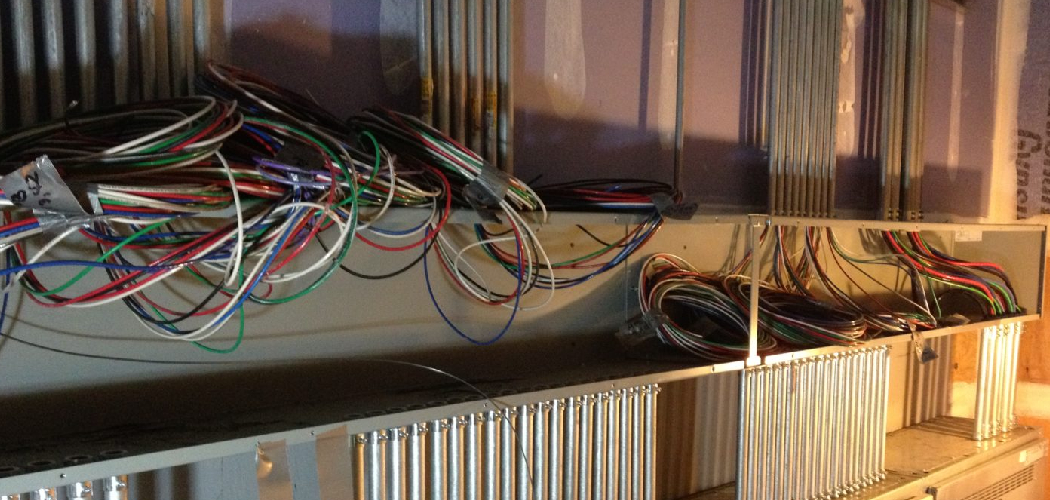Are you looking for a way to protect your whole house from electrical surges? Installing a whole-house surge protector is the most effective solution. Not only does it safeguard your home from power spikes, but it also helps extend the lifespan of your electronic devices and appliances.
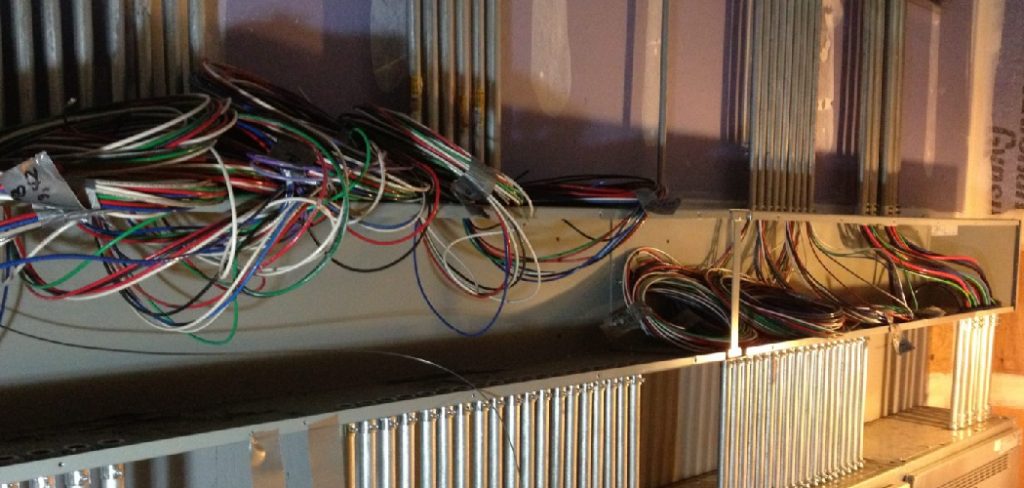
Surge protectors are crucial in safeguarding your home’s electrical system and appliances from unexpected power surges. Whole-house surge protectors are designed to provide a comprehensive line of defense, absorbing excess voltage before it reaches your critical devices. Installing a whole-house surge protector requires proper planning and knowledge of your home’s electrical panel to ensure it operates effectively.
This guide will walk you through the process of wiring a how to wire a whole house surge protector, helping you protect your home from potential electrical damage caused by lightning strikes, power outages, or sudden voltage spikes.
What Are the Benefits of Installing a Whole House Surge Protector?
Installing a whole-house surge protector offers numerous benefits that can protect your home and electrical devices. These include:
- Protection Against Voltage Spikes: A whole-house surge protector is designed to absorb excess voltage from power surges, preventing it from reaching sensitive electronic devices. This can save you from the hassle and cost of replacing damaged equipment.
- Enhanced Safety: Power surges can cause fires and other hazards in your home’s electrical system. A surge protector acts as an added layer of protection, reducing the risk of potential electrical hazards.
- Cost-effective Solution: While individual surge protectors for specific appliances or electronics can be effective, installing a whole-house surge protector is a more cost-effective solution. It offers protection for all of your electronic devices and appliances in one device.
- Easy Installation: Whole house surge protectors are easy to install, making it a convenient solution for homeowners. They can be installed at the main electrical panel or directly onto a wall outlet.
- Long-term Protection: A whole-house surge protector protects your home’s electrical system and electronic devices. Most models come with a warranty, offering peace of mind and potentially saving you money on future repairs or replacements.
What Will You Need?
To install a whole house surge protector, you will need:
- A whole-house surge protector unit
- Screwdriver or drill for installation
- Knowledge of your home’s electrical panel and circuit breakers
Once these materials are ready, follow the steps below to install your whole-house surge protector.
10 Easy Steps on How to Wire a Whole House Surge Protector
Step 1. Turn Off the Main Power
Before beginning any electrical work, it is crucial to prioritize safety. Locate your home’s main electrical panel and switch off the main breaker to cut power to the entire house. This step is necessary to ensure that you will not work with live wires, which could lead to electrical shocks or injuries.
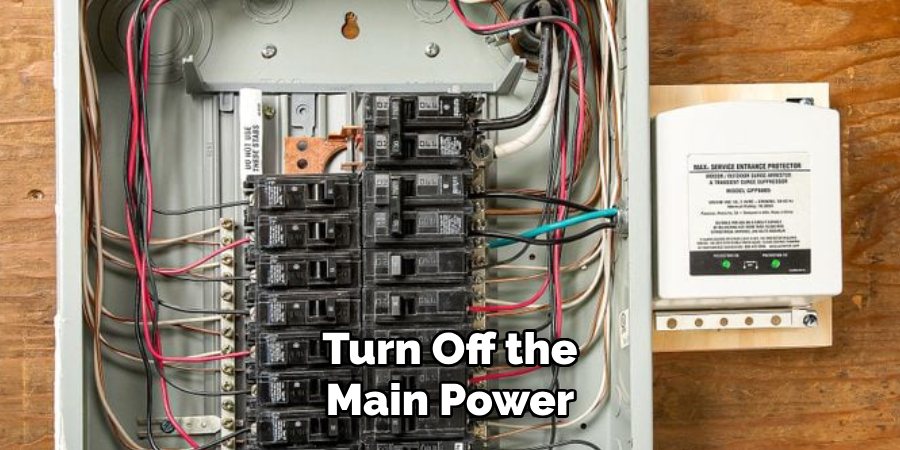
Double-check that the power is fully off using a voltage tester or another reliable method to confirm no electricity is running through the panel. Remember, safety precautions are essential whenever dealing with electrical systems, and this practice will prevent potential accidents during the installation process.
Step 2. Locate the Electrical Panel
Begin by identifying the location of your home’s main electrical panel. Typically, this panel is in a utility area such as a garage, basement, or storage room. Look for a metal box mounted on the wall, often labeled or marked to indicate its purpose. If you are unfamiliar with the layout of your building, consult any available blueprints or ask the property manager or a knowledgeable individual for assistance. Properly locating this panel is crucial, as it will be the central point for managing and working on your electrical system. Always ensure the area around the panel is well-lit and free of any obstructions to facilitate safe and efficient work.
Step 3. Choose a Placement for the Surge Protector
When choosing a placement for the surge protector, it is essential to prioritize accessibility and effectiveness. Select a location close to the electrical panel but not obstructing it, as this will simplify installation and future maintenance. Ensure the area is dry and well-ventilated to maintain the longevity and functionality of the surge protector. Avoid placing it in areas prone to excessive heat, moisture, or dust, as these conditions can negatively impact its performance. Additionally, confirm sufficient space around the surge protector for safe operation and easy inspection.
Step 4. Prepare the Surge Protector
Before installation, thoroughly inspect the surge protector to ensure it is in proper working condition. Check for any visible signs of damage, such as cracks or loose components, and verify that all included accessories are accounted for, such as mounting brackets or screws. Review the manufacturer’s instructions to familiarize yourself with the device’s specific features and requirements.
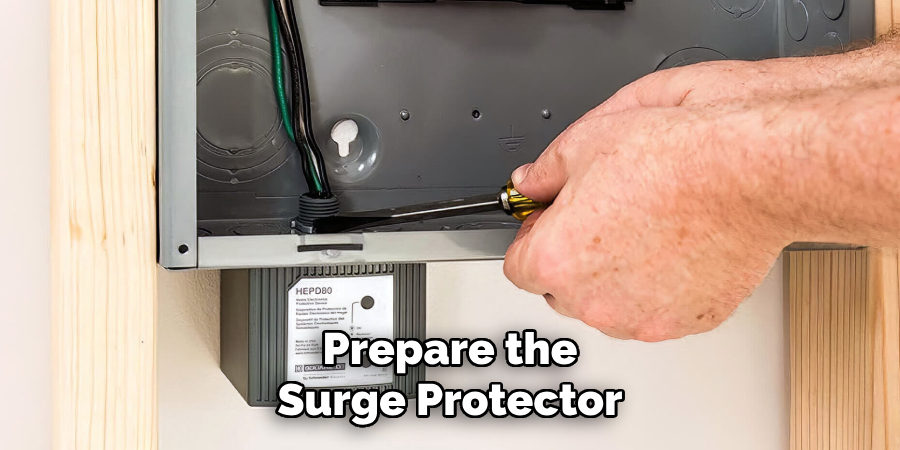
If the surge protector has a wiring diagram, refer to it to understand the correct connections. Ensure you have the tools on hand, such as screwdrivers, wire strippers, and a voltage tester, to proceed with the installation smoothly.
Step 5. Mount the Surge Protector
Carefully select an appropriate location to mount the surge protector, ensuring it is close to the electrical panel for easier wiring and optimal performance. Use the mounting brackets or screws provided to secure the surge protector to the wall or a stable surface. Make sure it is mounted in a position that allows for safe and easy access for future inspections or maintenance. Double-check that the surge protector is firmly secured and level before proceeding to the next step.
Step 6. Identify a Double Pole Circuit Breaker
A double-pole circuit breaker is essential for connecting the surge protector to your electrical panel. It is typically wider than a single-pole breaker and designed to handle 240 volts by occupying two adjacent slots on the breaker panel. Look for a breaker labeled with the amperage specified in the surge protector’s installation guide, as this ensures compatibility and proper functioning. If you are uncertain which breaker to use, consult the panel’s circuit directory or refer to the manufacturer’s specifications for guidance.
Step 7. Connect the Wires
Start by carefully connecting the wires from the surge protector to the corresponding terminals on the double-pole breaker and the neutral bar in the electrical panel. Typically, the surge protector will have a hot wire (often black or red), a neutral wire (white), and a ground wire (green or bare).
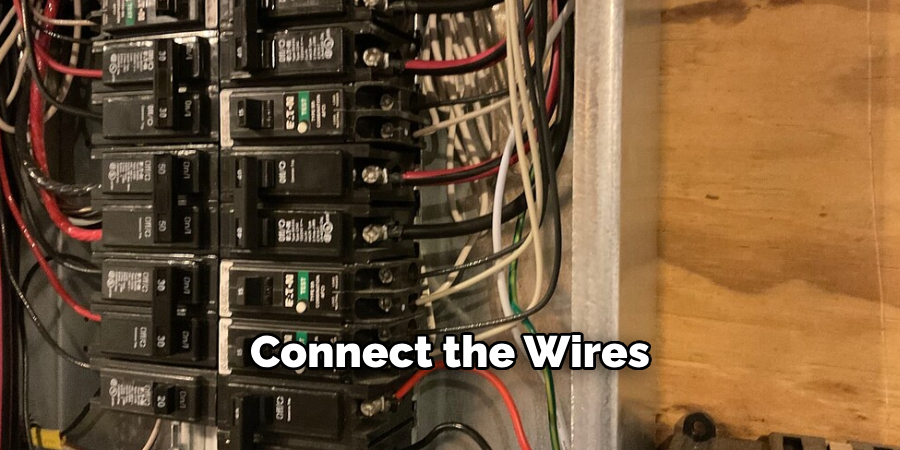
Attach the hot wire(s) to the breaker terminals, ensuring they are securely fastened. Next, connect the neutral wire to the neutral bar, then attach the ground wire to the ground bar. Ensure all connections are tight and free from any exposed copper wire to maintain safety and ensure proper functionality.
Step 8. Reassemble the Panel Cover
Carefully place the panel cover back onto the electrical panel, ensuring all breakers, including the surge protector, align properly with their respective openings. Secure the cover using the screws you removed earlier, tightening them evenly to keep the panel stable. Double-check that the cover is firmly in place and that there are no gaps or misalignments. This step ensures the electrical panel is safely enclosed and ready for operation.
Step 9. Turn the Power Back On
With the panel cover securely in place, turn the main breaker back on. This will restore power to the entire electrical system. Next, switch on each circuit breaker one at a time to avoid sudden power surges. After all breakers are turned on, test the system by verifying that the surge protector is functioning correctly, as indicated by its status lights or display. This final step ensures that your installation is complete and your home is safeguarded against electrical surges.
Step 10. Test the Surge Protector
To test the surge protector, start by plugging a device, like a lamp or phone charger, into one of its outlets to confirm that it supplies power. Check the indicator lights on the surge protector; a correctly functioning unit should display a green or similar-colored light, confirming its protection status. If the device does not power on or the indicator lights show a fault (often displayed as a red light or absence of light), the surge protector may not be working correctly and may need replacement.
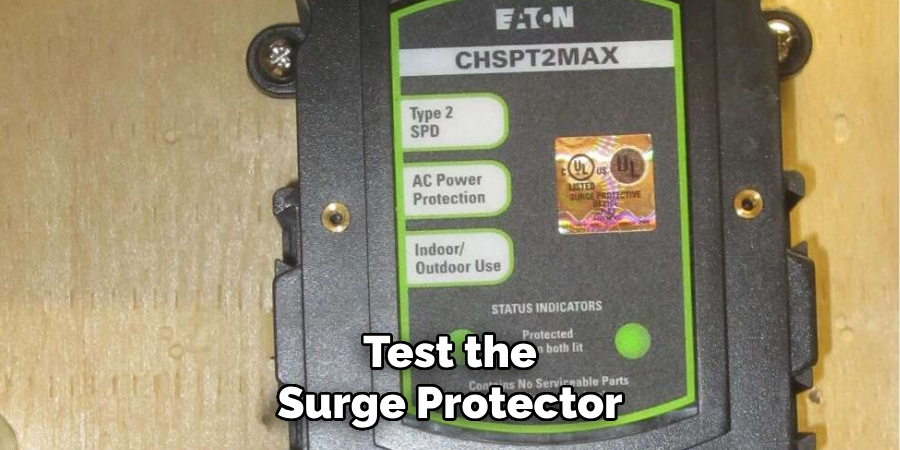
By following these steps, you can safely and effectively wire a whole-house surge protector, safeguarding your home from electrical surges.
5 Things You Should Avoid
- Skipping the Power Shutdown
Never wire a surge protector without turning off the main power supply. Working on a live electrical panel is extremely dangerous and can result in serious injury or even death.
- Using Incorrect Tools or Equipment
Avoid using tools that are not rated for electrical work. Similarly, ensure you’re using a surge protector specifically designed for whole-house protection to ensure compatibility and effective performance.
- Neglecting to Follow the Manufacturer’s Instructions
Each surge protector model has specific installation guidelines. Failing to adhere to these instructions can lead to improper wiring and may void the warranty on your surge protector.
- Improper Grounding
Poor grounding can compromise the surge protector’s effectiveness and increase the risk of damage to your electrical system. Always check that the grounding is secure and in accordance with local electrical codes.
- Skipping a Professional Inspection
Don’t attempt DIY installations if you’re not confident in your electrical skills. Even if the wiring appears correct, having a licensed electrician inspect and verify the installation for safety and compliance is wise.
Conclusion
How to wire a whole house surge protector is a crucial step in safeguarding your home’s electrical system and appliances against power surges.
You can ensure effective protection by carefully selecting the right surge protector, following proper installation practices, and adhering to local electrical codes. Always prioritize safety by checking grounding connections and consulting a licensed electrician if you are uncertain about the process.
Taking these precautions will provide peace of mind and long-term reliability for your home’s electrical infrastructure.

